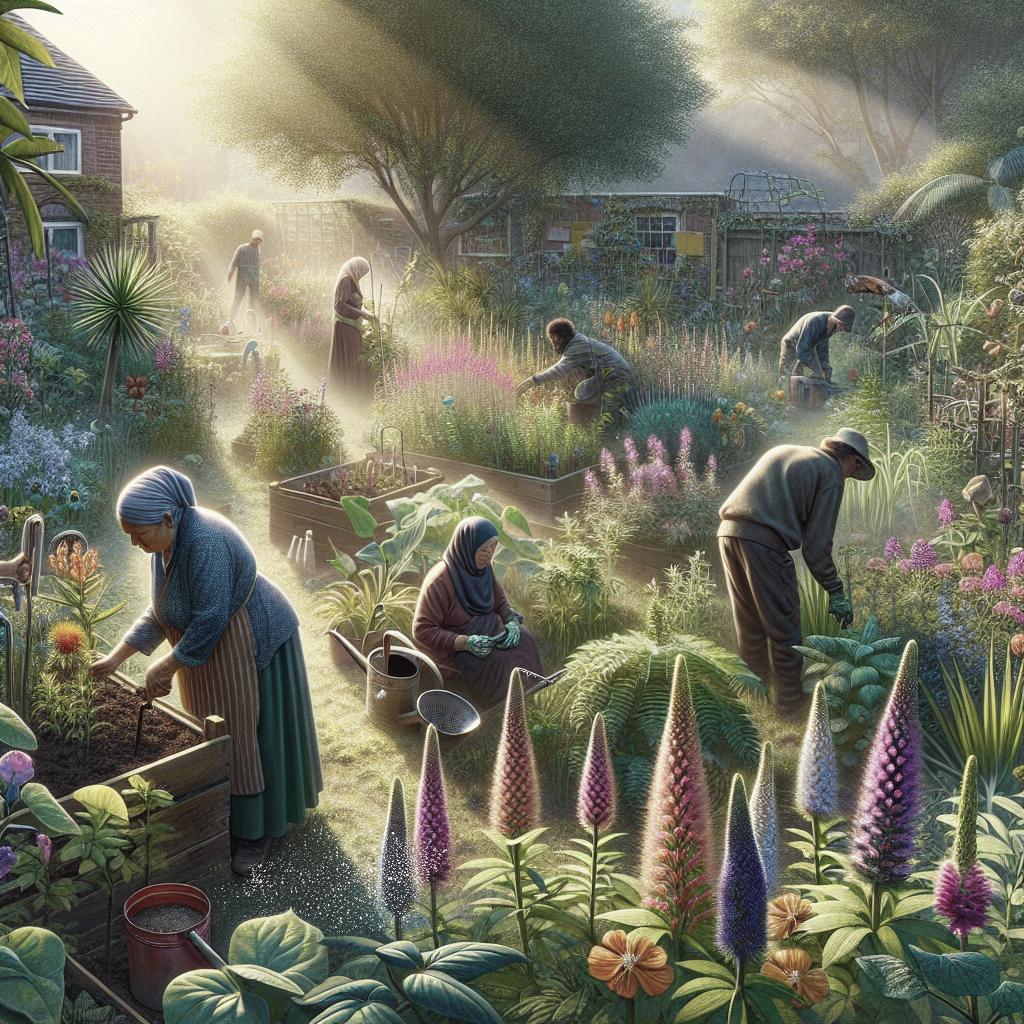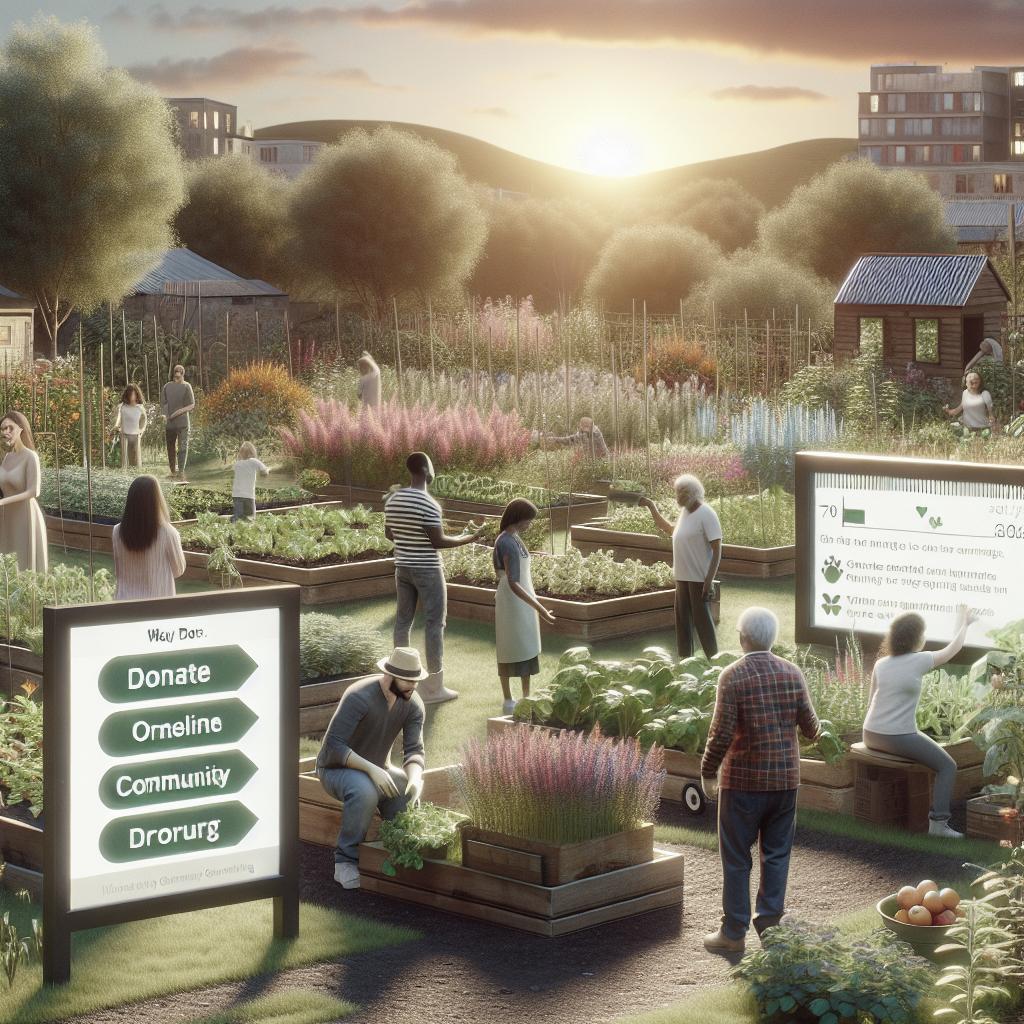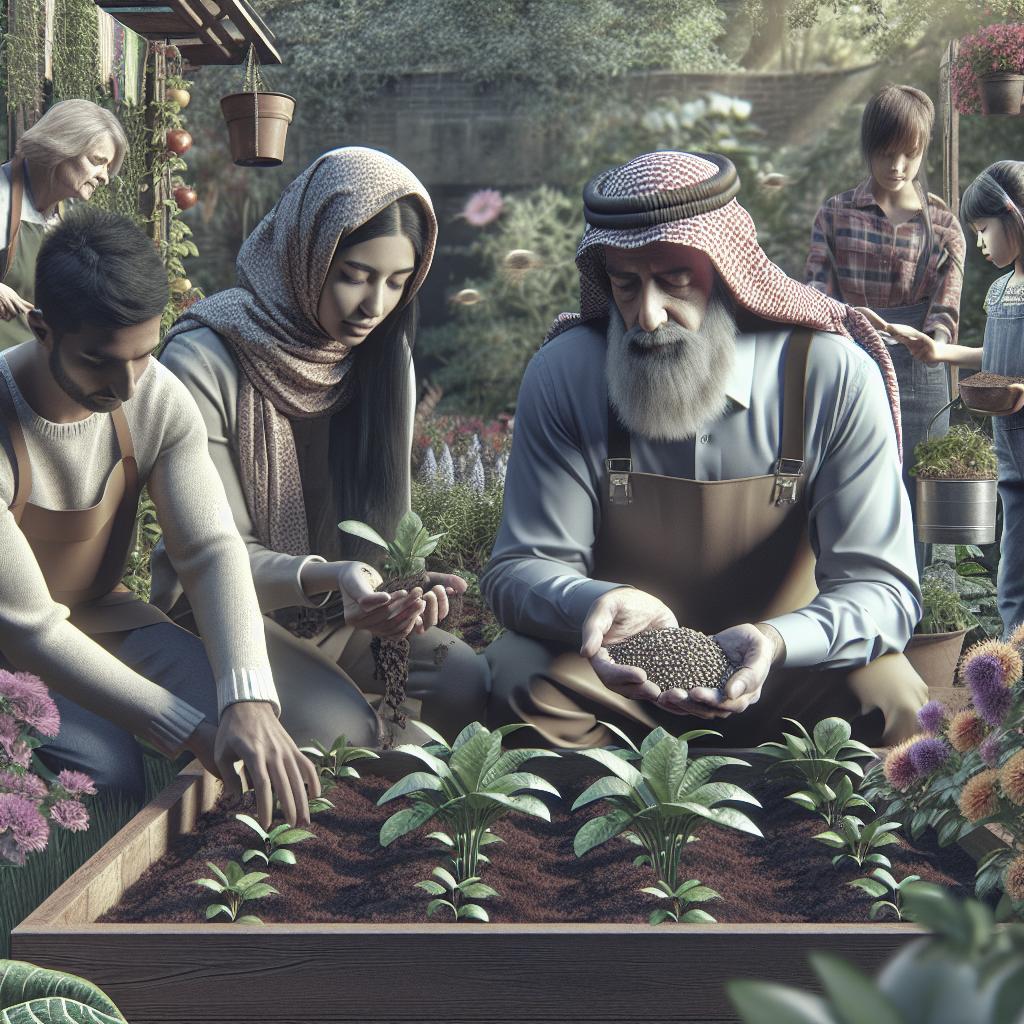Sure, here is your blog post! — Community gardens are powerful tools in fostering local biodiversity, promoting sustainable practices, and strengthening communal bonds. By integrating native plants, these gardens can become vibrant ecosystems that support local wildlife, conserve resources, and reflect the natural beauty unique to the region. This blog post will guide you through the process of incorporating native plants into your community garden, from understanding why native plants are beneficial to sourcing, maintaining, and maximizing your garden’s ecological and aesthetic values.
Support biodiversity by naturalizing your garden with native plants
Native plants are species that have naturally evolved in a specific region over thousands of years. They form the backbone of local ecosystems, providing essential habitat and food sources for wildlife such as birds, insects, and other critters. By incorporating native plants into your community garden, you can help support and enhance local biodiversity. One of the significant advantages of native plants is their adaptability to local environmental conditions. Unlike exotic plants, natives are more likely to thrive with minimal human intervention because they are accustomed to the local climate, soil types, and rainfall patterns. This not only reduces the need for fertilizers and pesticides but also saves water. Additionally, native plants often develop deeper root systems, which can help prevent soil erosion and manage stormwater runoff more effectively.
Where to begin?
The first step in incorporating native plants into your community garden is to understand your local ecosystem. Researching which plants are native to your area is crucial. You can begin by consulting local resources such as botanical gardens, university extension programs, and online plant databases dedicated to native species. Identifying the specific conditions in your garden—such as soil type, sunlight levels, and moisture availability—will also guide you in selecting appropriate plants. Formulating a garden design is the next step. Consider how different plants will interact with each other and the overall aesthetic you wish to achieve. Grouping plants that have similar growing needs will ensure a harmonious and thriving garden. Incorporate a mix of perennials, shrubs, trees, and ground covers to create layers of vegetation, emulating a natural landscape. Involve community members in the planning process. Hosting workshops or community meetings to educate residents about the benefits of native plants can encourage participation and a sense of ownership. Collectivizing the effort not only shares the workload but also builds a stronger, more connected community.
Resources
There are numerous resources available to help you identify and select native plants for your garden. Websites such as the Lady Bird Johnson Wildflower Center, the National Wildlife Federation, and local botanical gardens provide databases and tools for selecting native species based on your region. These platforms often include detailed plant profiles that describe growth habits, bloom times, and preferred growing conditions. Books and field guides can also be valuable resources. Titles like “Bringing Nature Home” by Douglas Tallamy and “Native Plants of the Southeast” by Larry Mellichamp offer in-depth information on ecological landscaping with native flora. Additionally, local government agencies and nonprofit organizations may provide free guides and brochures tailored to your area’s unique plant communities. Don’t overlook the benefit of joining local native plant societies or gardening clubs. Membership often includes access to newsletters, workshops, plant sales, and expert advice. These groups are excellent ways to connect with other gardeners who have experience with native plants and can offer practical, hands-on guidance.
Sourcing plants
Sourcing native plants can be both an exciting and challenging task. Start by visiting local nurseries that specialize in native species. These establishments are more likely to offer a wider selection of truly native plants, as opposed to cultivars and hybrids that may not offer the same ecological benefits. Consider seed exchanges and plant swaps as cost-effective and community-centric methods of acquiring native plants. Local gardening clubs, native plant societies, and online forums often organize events where gardeners can exchange seeds and plants, sharing not just flora but also gardening knowledge and tips. Another option is to grow your native plants from seeds. This approach is often more economical and provides an excellent opportunity to engage community members in the process. Educate volunteers on seed collection, propagation, and plant care. Several organizations offer native plant seed mixes designed for different habitats, such as prairies, woodlands, and wetlands.
Maintaining your garden
The maintenance needs of native plants are typically lower than those of non-native species, but it’s still essential to provide some initial care as they establish. Mulching helps retain soil moisture and suppress weeds, while regular watering during the first growing season will encourage deep root development. Weed control is critical during the establishment phase. Remove invasive plants that compete with your native species for resources. Over time, well-established native plants will form dense growth that naturally outcompetes most weeds, reducing the need for ongoing maintenance. Pruning and monitoring are necessary to maintain plant health and garden appearance. Prune dead or diseased branches to prevent the spread of pathogens and encourage healthy growth. Regularly inspect plants for signs of pests or disease and address issues promptly to minimize impact.
Your garden in the winter
Winter poses unique challenges but also opportunities for your native garden. Many native plants are perennials that will die back in the colder months but return in the spring. Leaving plant material in place over winter can provide habitat and food for wildlife. Seed heads from plants like coneflowers and grasses can attract birds, while fallen leaves and stems offer shelter for insects and small animals. Preparing your garden for winter involves a few key steps. Cut back some perennials if necessary, but consider leaving those that offer winter interest and support wildlife. Adding a layer of mulch can protect roots from freezing temperatures and help prevent soil erosion. Planning for winter also includes considering hardscaping elements like paths, benches, and signage. These features are not only practical but can make the garden a welcoming place year-round, providing structure and aesthetic appeal even when plants are dormant.
Reaping the rewards
The benefits of integrating native plants into your community garden extend beyond aesthetics. Native plants attract a variety of pollinators, including bees, butterflies, and birds, which play a crucial role in the ecosystem. A garden rich in biodiversity becomes a dynamic educational resource, illustrating ecological principles and the importance of conservation. Community involvement is another significant reward. Gardens serve as gathering places where individuals can connect, garden together, and share knowledge. The shared responsibility in creating and maintaining the garden fosters a sense of stewardship and pride within the community. Moreover, native gardens can have economic benefits. Reduced water usage and lower maintenance costs can make community gardens more sustainable in the long term. Grants and funding opportunities are often available for projects that promote environmental conservation and community engagement.
Get your lawn off grass
Replacing traditional lawns with native plant landscapes is an impactful way to contribute to environmental conservation. Lawns, which are often monocultures, require significant resources to maintain, including water, fertilizers, and pesticides. In contrast, native plant gardens support biodiversity and are much more resource-efficient. Begin by removing sections of your grass lawn and replacing them with native plants. Opt for a mix of ground covers, perennials, grasses, and shrubs to create a varied and resilient landscape. Educate community members about the environmental benefits of transitioning from grass lawns to native plant gardens. While the initial transformation may involve some effort, the long-term rewards are worth it. Not only will you create a more sustainable and engaging garden space, but you’ll also set an example for others in the community to follow, amplifying the positive impact.
| Section | Summary |
|---|---|
| Support biodiversity by naturalizing your garden with native plants | Incorporating native plants enhances local ecosystems, supports wildlife, and reduces resource usage. |
| Where to begin? | Research local species, plan your garden layout, and engage the community in the design process. |
| Resources | Utilize online databases, books, local organizations, and gardening clubs for information and support. |
| Sourcing plants | Acquire native plants through nurseries, seed exchanges, and community initiatives. |
| Maintaining your garden | Provide initial care, mulch, control weeds, and prune to ensure healthy growth and garden aesthetic. |
| Your garden in the winter | Prepare by protecting plants, providing habitats, and maintaining aesthetic elements. |
| Reaping the rewards | Enjoy the ecological, educational, communal, and economic benefits of a native plant garden. |
| Get your lawn off grass | Replace traditional lawns with native plants to promote sustainability and support biodiversity. |
— By embracing native plants in community gardens, we not only create beautiful and resilient landscapes but also contribute meaningfully to local biodiversity and sustainable practices. Happy gardening!


